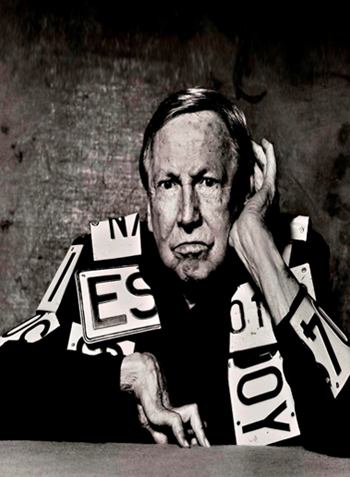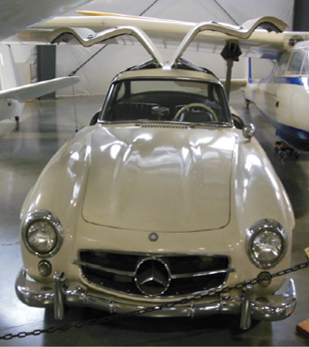The Postmodern era begins around the end of World War II, in 1945, and The Vietnam War: The Cold War, ‘55-’75. In the USA political and racial turmoil contribute to the reasons why Martin Luther King, President John F. Kennedy, and his brother Senator Robert F. Kennedy are assassinated. People learn to exchange naivety for harsh reality. Postmodern painting reflects trained artists’ responses. No longer dependent upon classical teachings, some artists begin to incorporate image-based commercial products and services. This collection of paintings illustrates the unleashing of artistic freedom.
Robert Rauschenberg (1925 – 2006) serves in the military like many artists, in his generation, during the 1940s and he benefits from a Government Issued Bill to attend college.
Rauschenberg studies art in Paris after the war and continues at the progressive, Black Mountain College, in North Carolina. There, the transplant from the Lone Star State of Texas explores new ways to redefine modern art with all sorts of materials. In 1949, Rauschenberg heads to the Big Apple to focus on his bold ideas.
He assigns the name “Combines,” to his most radical concept. Rauschenberg’s whimsy not only defines the approaching Pop Art movement, his style revolutionizes the World of Western Art, in the early fifties.
Rauschenberg speaks of his friend Johns - the preceding artist, in the Pop Art Collection. “We were each other’s first critics. Jasper and I literally traded ideas. He would say I’ve got a terrific idea for you and then I would have to find one for him.”
The multi-media artist is awarded the National Medal of Arts, in 1993. Rauschenberg is an active artist until he dies of a heart attack, in Captiva, Florida.

Postmodern, Pop Art movement (1950s – 70s) Rauschenberg’s decision to create a recognizable form of art is diametrically opposed by many, in the Abstract Expressionist movement.
In contrast to the traditions of fine art painting with historical narratives and God-like images, Rauschenberg believes art could be made out of something no matter how trivial, and the idea behind a work of art is more important than the work itself.
Alan Bloom, a prominent critic and professor, at the University of Chicago, sits on their Committee for Social Thought. Bloom sees the popular-culture movement as part of the effort to delegitimize the classics.
Rauschenberg responds, “I really feel sorry for people who think things like soap dishes or mirrors or Coke bottles are ugly, because they’re surrounded by things like that all day long, and that must make them miserable.”
American abstract expressionist painter, Jack Tworkov, encourages us to see beyond what others have decided should be the limits of art. Be sure to watch the informative PBS documentary of “The 1950s.”

Go on to Describe, Analyze, Interpret & Conclude. Contact me for help.
Monogram (1995 – 59) consists of oil, printed paper, printed reproductions; metal, wood, rubber heel, and a tennis ball on canvas. Paint on taxidermy - the Angora goat and the tire are mounted on a wooden base with four casters. (42 x 64 x 64 in. - 107 x 161 x 164 cm.).
A video of Rauschenberg has been removed showing the artist sitting on the floor, of the Solomon R. Guggenheim Museum of Art, in Manhattan, while Monogram is assembled for exhibition. He speaks lovingly about animals, how he sees the goat in a store window, buys the treasure for thirty-five dollars, and transforms him into art.
The French art critic, Andre Parinaud, explains their meaning. “As the name suggests the “Combines” are hybrid works that associate painting with collage and assemblage of a wide range of objects taken from everyday life.
“The collage elements - the goat and the tire do not seek unity. They coexist. The meaning of the assemblage is attained in this.”